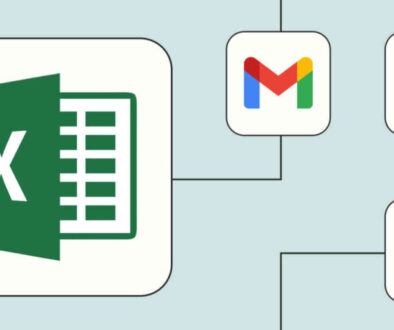Thinking With An Automation Mindset
Automation is a big part of how businesses stay ahead of the curve. It involves setting up systems that run on their own, to clear space for employees to focus on more important work. Automation starts from a trigger, which then kicks off one or more actions—all in apps you use to get work done.
So, what is an automation mindset? It’s a mindset that keeps automation at the forefront of your daily activities. Instead of automation being an afterthought, you proactively think about how automation can streamline your work processes.
For example:
-
Someone without an automation mindset waits for a problem before considering automation.
-
Someone with an automation mindset is proactively thinking about how automation can help them get more done in a less stressful environment.
How To Develop An Automation Mindset
Developing an automation mindset starts by looking at your work processes and evaluating how automation can streamline operations, accelerate growth, increase reliability, and more.
There are three main qualities to look for in a task or work process that signifies it should be automated:
-
Repetitive: mind-numbing work, such as copy/paste and data entry.
-
Fragile: work that sees a lot of human error, like typos or forgotten steps.
-
Timely: recurring tasks, such as reminders and automatic responses.
Once you notice these qualities in your work, you can think about how to use automation to improve the way you do things.
You can also look at your work through the apps you use and how you use them. These tasks fit into the repetitive, fragile, and timely framework above—it’s just a different way of looking at your work.
-
Forms as a trigger: best when you want to gather information from customers, leads, or teammates. Automation that starts from forms can do things like store data, send data, or notify people of new responses.
-
Sheet-based coordination: spreadsheets and databases can take information in from many places, store it for analysis and reference, and provide a place for team members to distribute work or approve things before sending information back out again.
-
Notification actions: use automation to notify a team member (or yourself) through your chat app or task management tool of choice when something is ready for them to do or review.
Creating Habits That Unlock Automation Opportunities
There are six habits that can help you level up your automation—allowing automation to be something that really drives value for your business.
1. Start small and iterate regularly
Many people make the mistake of trying to automate too much, too soon, when they begin their journey with automation. Automation is a process and skill to be learned with practice.
We always recommend starting with a simple but super helpful automatic workflow. For example, you could automate a calendar invite when someone schedules a meeting via a form on your website or send a message in a specific slack channel when someone fills out a help ticket.
Then, once you get comfortable with simple automations, you can start to add more steps and even some logic!
2. Ask how, not who
Instead of asking who will do the work, start to think about how the work will get done. Once you dig into the actual work process, you will notice different steps that can be automated.
For example, let’s say you want to streamline your lead management. First, think about all the steps you have to take:
-
Get lead info from your website
-
Transfer new lead info to your CRM (customer relationship management) tool
-
Add the new lead to your marketing email list
-
Assign the new lead to a sales associate
As mentioned above, start small. You can quickly set up an automation that sends info from your form directly to your CRM, minimizing your tedious tasks and the chances for copy/pasting errors.
Eventually, you’ll start to discover how you can tie those steps together into a more complex automated workflow.
3. Educate your team and spread the mindset
This next habit is all about educating your team and spreading the automation mindset—because automation is most valuable when everyone is using it. It saves triple the time and energy. Plus, it can give your team unique insights into daily tasks and workflows.
By educating your team about automation, you’re empowering them to make their work more efficient and, in many cases, more enjoyable.
4. Create an automation cadence
Make automation something you talk about regularly. Do this by adding ‘automation strategy’ as a recurring discussion item in your team meeting. It’s helpful to ask questions like: Where is everybody spending their time? Where are the mistakes happening? What tasks do you dread doing on a daily, weekly, monthly basis?
5. Budget time and money upfront
Next up: take a breath and think about budgeting some time and money upfront for automation. When deciding how much money you want to spend on automation, consider the costs of a human doing the job manually, the costs of human error, and the costs of employee turnover.
You need to set expectations because automation is a process. As an automation newbie, it can feel tricky to set up and often takes up more time than expected. That’s ok! It’s worth it to take time to correctly set up your own personalized automation workflows.
6. Have winning anecdotes in your back pocket
One of the best things about automation is that you can set it up and then forget about it—because it consistently does the work in the background. However, this can make it hard to justify automation, especially when it magically happens behind the scenes. We’ve found that often this causes businesses to take automation for granted.
To mitigate this issue, have two examples of why automation is so beneficial ready to share at all times. Have one example that focuses on customer-facing automation and one on back-office automation.
It’s critical to communicate the value automation creates so you can continue to scale your business without breaking the bank.
Be Proactive Instead Of Reactive
The automation mindset is all about being proactive instead of reactive. Intentionally search for tasks and processes that are repetitive, fragile, and timely.
Once you find those qualities, automate it by:
-
Starting small
-
Getting feedback from coworkers
-
Setting a time to reiterate on the automation
Then, be sure to share the power of automation with your colleagues and coworkers! As we like to say at Zapier, ‘don’t be the robot, build the robot.’
Ready To Get Into An Automation Mindset?
Call Epic IT Consulting today at 608-496-8660 or fill out our online form.
Source: Zapier



